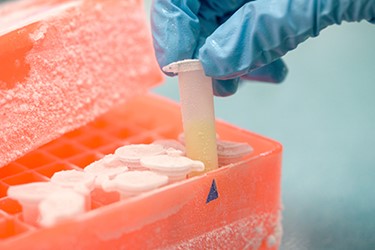Managing Refrigerated vs. Frozen Drug Product: What's The Big Deal?
By Bruce C. Simpson, Thermo Fisher Scientific

Pharmaceutical products were—until recently—a chemical in a pill or bottle and were taken with a drink of water, from a teaspoon, or injected by needle. Most of these finished agents were chemically stable compounds that could be kept at room temperature for years. The drug substance, the intermediate stages in the development and manufacture of these products, typically required refrigeration within a tight temperature range of +2°C to +8°C and usually had a short shelf life. Maintaining this tight temperature range is a challenge, but the nature of this drug product resulted in only short-term storage and the need for storage capacity was relatively modest.
The most common storage is ultra-low temperature storage, but the fastest-growing is cryogenic, in vapor phase liquid nitrogen. This transition is huge.
Today, we are focused on developing advanced therapies that are derived from human cells, and either retaining or changing some specific living, complex molecular attributes. These materials are also very sensitive to temperature change and are most often frozen at -70°C to -90°C (and increasingly in LN2). Additional differences: these materials are often aliquoted prior to being frozen, may be in storage for a much longer period of time, and are of far higher value—in some cases, irreplaceable.
The volume of materials in ultra-cold storage has already overtaken refrigeration, and this has created unexpected challenges for those companies and researchers coming from a small molecule background. There is a big difference between managing drug substance under refrigeration and managing drug substance at ultra-low temperatures (between -70°C and -90°C) or in LN2, and the difference goes well beyond temperature. Additional factors have to be accounted for, depending on the nature of the material and its end use, and this is the source of the challenges. Often a key question is around cold chain distribution: how does one ship material - ultra-cold or cryogenic - and ensure that the material arrives at the same temperature in which it is stored? Chain of temperature data and chain of custody in handling is imperative to the pharmaceutical industry of today. These additional factors partly explain the much higher cost of these therapies as well. The three primary issues are: capacity, regulatory, and risk. We’ll look briefly at all three.
Get unlimited access to:
Enter your credentials below to log in. Not yet a member of Clinical Leader? Subscribe today.
